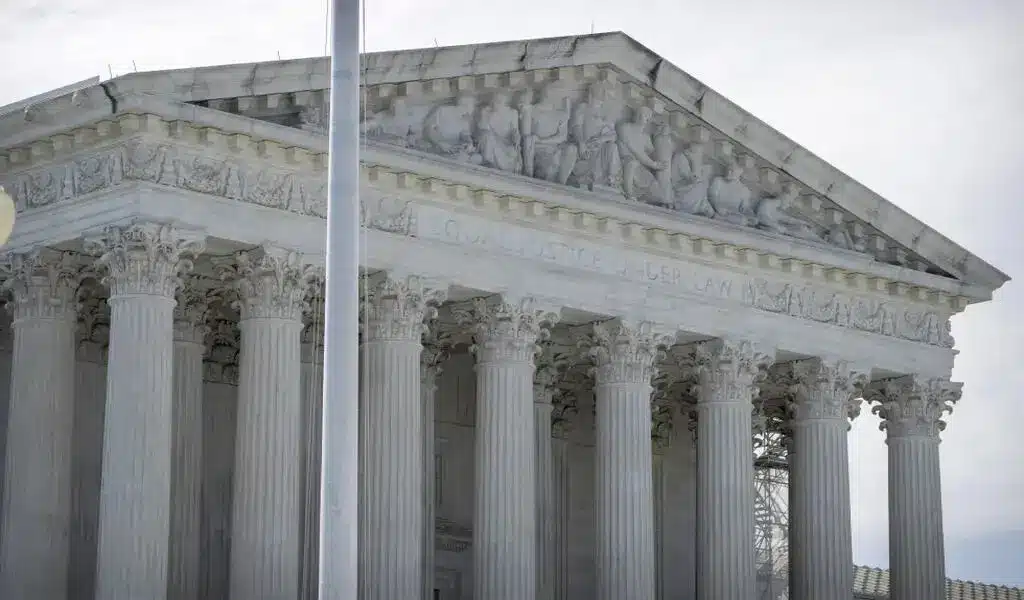News
Today’s Pakistani Youth in UK Say Cousins Marrying Cousins is Disgusting

Research in the UK indicates that there has been a precipitous decline in the number of cousin marriages among Bradford’s Pakistani population over the last decade. Changing immigration policies, shifting family relationships, and increased levels of education are all factors that could be at play.
Juwayriya Ahmed married her cousin in 1988. The 52-year-old teacher says her children once asked her how she and their father met.
“I was laughing at them. I said I didn’t really meet him. My parents took me to Pakistan and my dad said you’re going to marry this person. And I sort of knew who he was, but the first time I met him properly was at the wedding,” she says.
“My kids said that was disgusting. And then they told me, ‘Don’t you dare make us do anything like this.'”
Ten years ago researchers studying the health of more than 30,000 people in Bradford found that about 60% of babies in the Pakistani community had parents who were first or second cousins, but a new follow-up study of mothers in three inner-city wards finds the figure has dropped to 46%.
The original research also demonstrated that cousin marriage roughly doubled the risk of birth defects, though they remained rare, affecting 6% of children born to cousins.
“In just under a decade we’ve had a significant shift from cousin marriage being, in a sense, a majority activity to now being just about a minority activity,” said Dr John Wright, chief investigator of the Born in Bradford research project.
“The effect will be fewer children with congenital anomalies.”About 25% of Bradford’s population is Pakistani in origin, according to the 2021 census. Cousin marriage is widespread in Pakistan-administered Kashmir, where many Bradford families originate.

Sometimes a young person in Bradford is married to a cousin in Pakistan, who then comes to live in the UK. But members of the community say there have been inter-generational tensions over this tradition, with some young people firmly rejecting the idea of arranged marriage – and cousin marriage in particular.
“Our generation really fought for it,” says one young woman.
“Ten years ago my mum was adamant we would all have cousin marriages but now she doesn’t focus on that. I think families realised they couldn’t control it. They knew that being in Britain, and being exposed to so many different viewpoints, it is going to change.”
Academics say there are a range of reasons for the fall in first-cousin marriage
Professor of health research, Neil Small, who has been involved with Born in Bradford from the start, says a number of possible explanations for the rapid fall in cousin marriage are now being explored in consultation with the community:
- Awareness of the risk of congenital anomalies has increased
- Staying in education longer is influencing young people’s choices
- Shifting family dynamics are changing conversations about marriage between parents and children
- Changes in immigration rules have made it harder for spouses to move to the UK
One person affected by new immigration rules was Bradford-born Ayesha, who married her first cousin in Pakistan eight years ago and gave birth to their first child the following year.
Her husband was unable to move to the UK until the baby was two. Meanwhile Ayesha had to work long hours as a home care worker to reach a salary threshold introduced in 2012 for anyone wanting to bring a spouse from outside Europe to live in the country.
She thinks cousin marriage is a valuable tradition though, and regrets that it appears to be in decline.
“I don’t think my children will marry cousins. They will lose that connection with Pakistan and I feel sad about that,” she says.

In fact, two of Ayesha’s younger sisters, both in their 20s, have rejected the idea of cousin marriage. One, Salina, recently married a man of her own choice, with her parents’ consent.
“I’m outgoing and I want to work and do things with my life. Someone from Pakistan wouldn’t accept this at all,” she says. “They would never let me live like this. We wouldn’t agree on how to raise kids and how to teach them values.”
The other sister, Malika, is also planning one day to choose her own husband.
“Before, even if you had an education, you wouldn’t be expected to carry on with it, you would have been thinking of marriage,” she says. “Now that’s changed and the mindset is so different.”
She adds that young people today have more opportunities to meet potential partners than their parents ever did, and that social media has helped provide “contact with people outside our parents’ eyes”.
The Born in Bradford team has made efforts to explain to the community how congenital anomalies come about. They occur when both parents carry a particular defective gene, which may happen when the parents are unrelated, but is more likely when they are cousins.
Anomalies can affect the heart, the nervous system, limbs, the skin or other parts of the body. They are sometimes untreatable and can be fatal.

Dr. Aamra Darr, a medical sociologist with the University of Bradford’s Faculty of Health Studies, says Pakistani cousin marriage is a risk factor, but not a cause of congenital anomalies.
She points out that the 2013 Born in Bradford study showed that the risk of married cousins having a baby with a congenital anomaly was similar to that of a white British woman aged 35 or over having a baby with an anomaly, including Down’s Syndrome.
However, she says health workers have sometimes told parents of a sick child in the Pakistani community: “It’s because you married your cousin.”
“It’s culture blaming,” she says. “You’re talking about the politics of race and health – the minority being judged by the majority population.”
She says that cousin marriage was once common among the white British population too, citing the case of Charles Darwin, who married his first cousin Emma Wedgwood.
According to Prof Small, about one billion of the world’s eight billion people live in societies where cousin marriage is commonplace.
However, cousins marrying cousins is now rare in the UK.
In the Born in Bradford study of 4,384 white British respondents, only two people were first cousins of their partner, and three were more distantly related.
If a group of teenagers interviewed for BBC Radio 4’s Born in Bradford programme is anything to go by, the next generation in the city may be even less open to marrying a cousin.
One 18-year-old said they didn’t see it as a “very normal thing” and were “grossed out by it”. “I don’t think I’d be willing to marry a cousin from back home,” they added.

Zaara, who’s also 18, says that circumstances have changed since her parents’ youth: “It’s easier to meet new people nowadays. Say you were from a village in Pakistan, it was easier to meet someone there. But now in Bradford you can meet so many different people, and you can still marry your people, but not someone you’re related to.”
Eesa, 17, says more people are now aware of the increased risk of congenital anomalies and it makes them less likely to want to marry a relative.
“It’s more of a person’s preference,” he says – adding that he thinks cousin marriage cases have gone down as there is “no longer a cultural reason” for them, such as conserving land ownership within a family.
Emari, 17, says different things are accepted in different cultures. “However, we don’t see cousin marriages happening that often in the UK any more.
“I think I’d let [my parents] find me someone – but not a cousin,” she says. “[They] know me and they know my type, so they would find me someone nice!”
This article was first published by the BBC
Pakistani TikTok Promotes Mental Health Awareness

News
Trudeau’s Gun Grab Could Cost Taxpayers a Whopping $7 Billion

A recent report indicates that since Trudeau’s announcement of his gun buyback program four years ago, almost none of the banned firearms have been surrendered.
The federal government plans to purchase 2,063 firearm models from retailers following the enactment of Bill C-21, which amends various Acts and introduces certain consequential changes related to firearms. It was granted royal assent on December 15 of last year.
This ban immediately criminalized the actions of federally-licensed firearms owners regarding the purchase, sale, transportation, importation, exportation, or use of hundreds of thousands of rifles and shotguns that were previously legal.
The gun ban focused on what it termed ‘assault-style weapons,’ which are, in reality, traditional semi-automatic rifles and shotguns that have enjoyed popularity among hunters and sport shooters for over a century.
In May 2020, the federal government enacted an Order-in-Council that prohibited 1,500 types of “assault-style” firearms and outlined specific components of the newly banned firearms. Property owners must adhere to the law by October 2023.
Trudeau’s Buyback Hasn’t Happened
“In the announcement regarding the ban, the prime minister stated that the government would seize the prohibited firearms, assuring that their lawful owners would be ‘grandfathered’ or compensated fairly.” “That hasn’t happened,” criminologist Gary Mauser told Rebel News.
Mauser projected expenses ranging from $2.6 billion to $6.7 billion. The figure reflects the compensation costs amounting to $756 million, as outlined by the Parliamentary Budget Office (PBO).
“The projected expenses for gathering the illegal firearms are estimated to range from $1.6 billion to $7 billion.” “This range estimate increases to between $2.647 billion and $7 billion when compensation costs to owners are factored in,” Mauser stated.
Figures requested by Conservative MP Shannon Stubbs concerning firearms prohibited due to the May 1, 2020 Order In Council reveal that $72 million has been allocated to the firearm “buyback” program, yet not a single firearm has been confiscated to date.
In a recent revelation, Public Safety Canada disclosed that the federal government allocated a staggering $41,094,556, as prompted by an order paper question from Conservative Senator Don Plett last September, yet yielded no tangible outcomes.
An internal memo from late 2019 revealed that the Liberals projected their politically motivated harassment would incur a cost of $1.8 billion.
Enforcement efforts Questioned
By December 2023, estimates from TheGunBlog.ca indicate that the Liberals and RCMP had incurred or were responsible for approximately $30 million in personnel expenses related to the enforcement efforts. The union representing the police service previously stated that the effort to confiscate firearms is a “misdirected effort” aimed at ensuring public safety.
“This action diverts crucial personnel, resources, and funding from tackling the more pressing and escalating issue of criminal use of illegal firearms,” stated the National Police Federation (NPF).
The Canadian Sporting Arms & Ammunition Association (CSAAA), representing firearms retailers, has stated it will have “zero involvement” in the confiscation of these firearms. Even Canada Post held back from providing assistance due to safety concerns.
The consultant previously assessed that retailers are sitting on almost $1 billion worth of inventory that cannot be sold or returned to suppliers because of the Order-In-Council.
“Despite the ongoing confusion surrounding the ban, after four years, we ought to be able to address one crucial question.” Has the prohibition enhanced safety for Canadians? Mauser asks.
Illegally Obtained Firearms are the Problem
Statistics Canada reports a 10% increase in firearm-related violent crime between 2020 and 2022, rising from 12,614 incidents to 13,937 incidents. In that timeframe, the incidence of firearm-related violent crime increased from 33.7 incidents per 100,000 population in 2021 to 36.7 incidents the subsequent year.
“This marks the highest rate documented since the collection of comparable data began in 2009,” the criminologist explains.
Supplementary DataData indicates that firearm homicides have risen since 2020. “The issue lies not with lawfully-held firearms,” Mauser stated.
Firearms that have been banned under the Order-in-Council continue to be securely stored in the safes of their lawful owners. The individuals underwent a thorough vetting process by the RCMP and are subject to nightly monitoring to ensure there are no infractions that could pose a risk to public safety.
“The firearms involved in homicides were seldom legally owned weapons wielded by their rightful owners,” Mauser continues. The number of offenses linked to organized crime has surged from 4,810 in 2016 to a staggering 13,056 in 2020.
“If those in power … aim to diminish crime and enhance public safety, they ought to implement strategies that effectively focus on offenders and utilize our limited tax resources judiciously to reach these objectives,” he stated.
Related News:
Millennials in Canada Have Turned their Backs on Justin Trudeau
Millennials in Canada Have Turned their Backs on Justin Trudeau
News
Google’s Search Dominance Is Unwinding, But Still Accounting 48% Search Revenue

Google is so closely associated with its key product that its name is a verb that signifies “search.” However, Google’s dominance in that sector is dwindling.
According to eMarketer, Google will lose control of the US search industry for the first time in decades next year.
Google will remain the dominant search player, accounting for 48% of American search advertising revenue. And, remarkably, Google is still increasing its sales in the field, despite being the dominating player in search since the early days of the George W. Bush administration. However, Amazon is growing at a quicker rate.
Google’s Search Dominance Is Unwinding
Amazon will hold over a quarter of US search ad dollars next year, rising to 27% by 2026, while Google will fall even more, according to eMarketer.
The Wall Street Journal was first to report on the forecast.
Lest you think you’ll have to switch to Bing or Yahoo, this isn’t the end of Google or anything really near.
Google is the fourth-most valued public firm in the world. Its market worth is $2.1 trillion, trailing just Apple, Microsoft, and the AI chip darling Nvidia. It also maintains its dominance in other industries, such as display advertisements, where it dominates alongside Facebook’s parent firm Meta, and video ads on YouTube.
To put those “other” firms in context, each is worth more than Delta Air Lines’ total market value. So, yeah, Google is not going anywhere.
Nonetheless, Google faces numerous dangers to its operations, particularly from antitrust regulators.
On Monday, a federal judge in San Francisco ruled that Google must open up its Google Play Store to competitors, dealing a significant blow to the firm in its long-running battle with Fortnite creator Epic Games. Google announced that it would appeal the verdict.
In August, a federal judge ruled that Google has an illegal monopoly on search. That verdict could lead to the dissolution of the company’s search operation. Another antitrust lawsuit filed last month accuses Google of abusing its dominance in the online advertising business.
Meanwhile, European regulators have compelled Google to follow tough new standards, which have resulted in multiple $1 billion-plus fines.

Pixa Bay
Google’s Search Dominance Is Unwinding
On top of that, the marketplace is becoming more difficult on its own.
TikTok, the fastest-growing social network, is expanding into the search market. And Amazon has accomplished something few other digital titans have done to date: it has established a habit.
When you want to buy anything, you usually go to Amazon, not Google. Amazon then buys adverts to push companies’ products to the top of your search results, increasing sales and earning Amazon a greater portion of the revenue. According to eMarketer, it is expected to generate $27.8 billion in search revenue in the United States next year, trailing only Google’s $62.9 billion total.
And then there’s AI, the technology that (supposedly) will change everything.
Why search in stilted language for “kendall jenner why bad bunny breakup” or “police moving violation driver rights no stop sign” when you can just ask OpenAI’s ChatGPT, “What’s going on with Kendall Jenner and Bad Bunny?” in “I need help fighting a moving violation involving a stop sign that wasn’t visible.” Google is working on exactly this technology with its Gemini product, but its success is far from guaranteed, especially with Apple collaborating with OpenAI and other businesses rapidly joining the market.
A Google spokeswoman referred to a blog post from last week in which the company unveiled ads in its AI overviews (the AI-generated text that appears at the top of search results). It’s Google’s way of expressing its ability to profit on a changing marketplace while retaining its business, even as its consumers steadily transition to ask-and-answer AI and away from search.

Google has long used a single catchphrase to defend itself against opponents who claim it is a monopoly abusing its power: competition is only a click away. Until recently, that seemed comically obtuse. Really? We are going to switch to Bing? Or Duck Duck Go? Give me a break.
But today, it feels more like reality.
Google is in no danger of disappearing. However, every highly dominating company faces some type of reckoning over time. GE, a Dow mainstay for more than a century, was broken up last year and is now a shell of its previous dominance. Sears declared bankruptcy in 2022 and is virtually out of business. US Steel, long the foundation of American manufacturing, is attempting to sell itself to a Japanese corporation.
SOURCE | CNN
News
The Supreme Court Turns Down Biden’s Government Appeal in a Texas Emergency Abortion Matter.

(VOR News) – A ruling that prohibits emergency abortions that contravene the Supreme Court law in the state of Texas, which has one of the most stringent abortion restrictions in the country, has been upheld by the Supreme Court of the United States. The United States Supreme Court upheld this decision.
The justices did not provide any specifics regarding the underlying reasons for their decision to uphold an order from a lower court that declared hospitals cannot be legally obligated to administer abortions if doing so would violate the law in the state of Texas.
Institutions are not required to perform abortions, as stipulated in the decree. The common populace did not investigate any opposing viewpoints. The decision was made just weeks before a presidential election that brought abortion to the forefront of the political agenda.
This decision follows the 2022 Supreme Court ruling that ended abortion nationwide.
In response to a request from the administration of Vice President Joe Biden to overturn the lower court’s decision, the justices expressed their disapproval.
The government contends that hospitals are obligated to perform abortions in compliance with federal legislation when the health or life of an expectant patient is in an exceedingly precarious condition.
This is the case in regions where the procedure is prohibited. The difficulty hospitals in Texas and other states are experiencing in determining whether or not routine care could be in violation of stringent state laws that prohibit abortion has resulted in an increase in the number of complaints concerning pregnant women who are experiencing medical distress being turned away from emergency rooms.
The administration cited the Supreme Court’s ruling in a case that bore a striking resemblance to the one that was presented to it in Idaho at the beginning of the year. The justices took a limited decision in that case to allow the continuation of emergency abortions without interruption while a lawsuit was still being heard.
In contrast, Texas has been a vocal proponent of the injunction’s continued enforcement. Texas has argued that its circumstances are distinct from those of Idaho, as the state does have an exemption for situations that pose a significant hazard to the health of an expectant patient.
According to the state, the discrepancy is the result of this exemption. The state of Idaho had a provision that safeguarded a woman’s life when the issue was first broached; however, it did not include protection for her health.
Certified medical practitioners are not obligated to wait until a woman’s life is in imminent peril before they are legally permitted to perform an abortion, as determined by the state supreme court.
The state of Texas highlighted this to the Supreme Court.
Nevertheless, medical professionals have criticized the Texas statute as being perilously ambiguous, and a medical board has declined to provide a list of all the disorders that are eligible for an exception. Furthermore, the statute has been criticized for its hazardous ambiguity.
For an extended period, termination of pregnancies has been a standard procedure in medical treatment for individuals who have been experiencing significant issues. It is implemented in this manner to prevent catastrophic outcomes, such as sepsis, organ failure, and other severe scenarios.
Nevertheless, medical professionals and hospitals in Texas and other states with strict abortion laws have noted that it is uncertain whether or not these terminations could be in violation of abortion prohibitions that include the possibility of a prison sentence. This is the case in regions where abortion prohibitions are exceedingly restrictive.
Following the Supreme Court’s decision to overturn Roe v. Wade, which resulted in restrictions on the rights of women to have abortions in several Republican-ruled states, the Texas case was revisited in 2022.
As per the orders that were disclosed by the administration of Vice President Joe Biden, hospitals are still required to provide abortions in cases that are classified as dire emergency.
As stipulated in a piece of health care legislation, the majority of hospitals are obligated to provide medical assistance to patients who are experiencing medical distress. This is in accordance with the law.
The state of Texas maintained that hospitals should not be obligated to provide abortions throughout the litigation, as doing so would violate the state’s constitutional prohibition on abortions. In its January judgment, the 5th United States Circuit Court of Appeals concurred with the state and acknowledged that the administration had exceeded its authority.
SOURCE: AP
SEE ALSO:
Could Last-Minute Surprises Derail Kamala Harris’ Campaign? “Nostradamus” Explains the US Poll.
-

 News3 years ago
News3 years agoLet’s Know About Ultra High Net Worth Individual
-
Entertainment2 years ago
Mabelle Prior: The Voice of Hope, Resilience, and Diversity Inspiring Generations
-

 Health3 years ago
Health3 years agoHow Much Ivermectin Should You Take?
-

 Tech2 years ago
Tech2 years agoTop Forex Brokers of 2023: Reviews and Analysis for Successful Trading
-

 Lifestyles3 years ago
Lifestyles3 years agoAries Soulmate Signs
-

 Movies2 years ago
Movies2 years agoWhat Should I Do If Disney Plus Keeps Logging Me Out of TV?
-

 Health3 years ago
Health3 years agoCan I Buy Ivermectin Without A Prescription in the USA?
-

 Learning3 years ago
Learning3 years agoVirtual Numbers: What Are They For?
